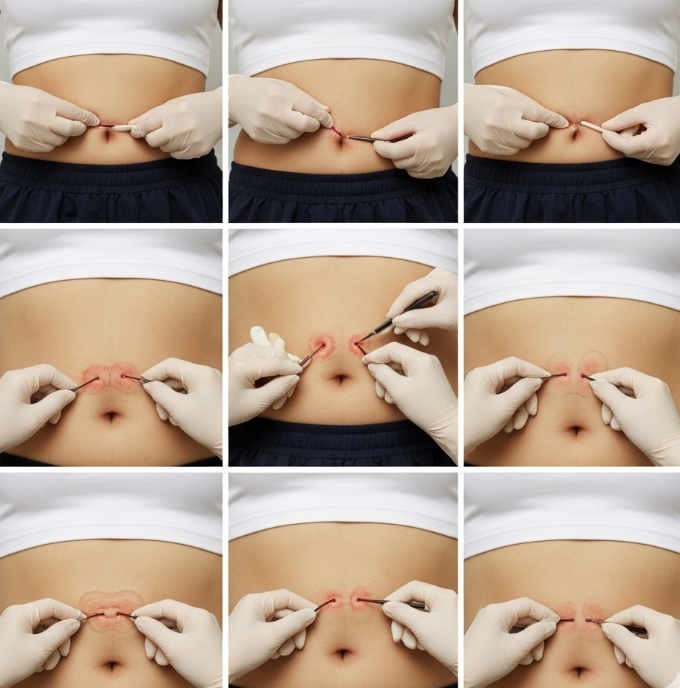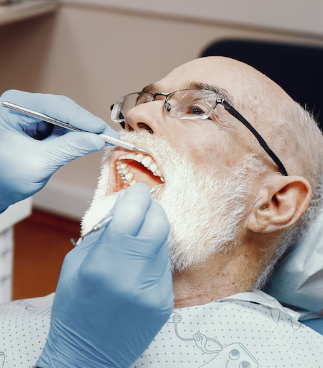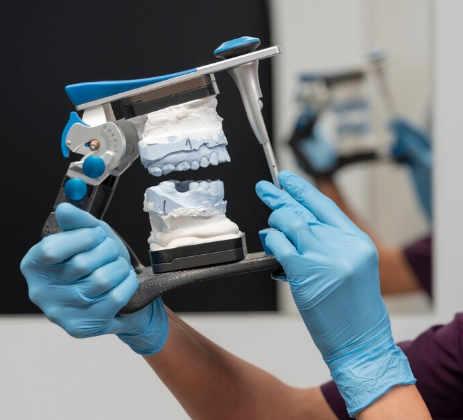Treatment Overview
Scar Revision Umbilicoplasty is a specialized cosmetic surgery designed to improve or correct scarring around the belly button (navel) caused by previous surgery, trauma, piercing, or infection. Since the navel is a central focal point of the abdomen, scars in this area can draw unwanted attention. This procedure focuses on removing, refining, or camouflaging scars while reshaping the belly button for a more natural, aesthetically pleasing appearance.
In Korea, plastic surgeons are globally recognized for their expertise in scar-minimizing techniques, precise suturing, and advanced aftercare. Scar revision umbilicoplasty is often performed alone or combined with tummy tuck, liposuction, or belly button reshaping for comprehensive abdominal enhancement.
Purpose & Benefits
- Scar Reduction: Improves the appearance of scars around the belly button.
- Belly Button Refinement: Enhances navel shape while revising scar tissue.
- Confidence Boost: Restores self-image in swimwear, crop tops, and low-rise clothing.
- Hidden Incisions: New incisions are placed discreetly inside or along the navel.
- Combination-Friendly: Can be performed with other abdominal surgeries.
Ideal Candidates
- Men and women with visible or raised scars around the navel.
- Patients with belly button deformities caused by C-sections, hernia repair, or prior cosmetic surgery.
- Individuals unhappy with their belly button after piercing scars or infections.
- Adults in good health and at a stable weight.
- Non-smokers or those willing to quit before and after surgery.
Possible Risks & Complications
- Temporary redness, swelling, or tenderness.
- Small risk of scar recurrence or persistent irregularities.
- Rare complications: infection, hematoma, delayed wound healing.
- Keloid or hypertrophic scarring (minimized with advanced Korean scar-care protocols).
Techniques Used
- Excision of Old Scar Tissue: Removes previous scars around the navel.
- Hidden Incision Placement: New scars placed inside or along the navel folds.
- Umbilical Reshaping: Refines belly button shape for natural proportions.
- Scar-Minimizing Closure: Fine sutures, layered closures, and medical adhesives.
- Advanced Scar Treatments: Often combined with laser therapy, RF treatment, or silicone therapy.
Recovery & Aftercare
- 1–3 days: Mild swelling or redness around the navel.
- 3–5 days: Return to light daily activities.
- 1–2 weeks: Stitches (if non-dissolvable) may be removed.
- 2–4 weeks: Resume light exercise; avoid abdominal strain.
Aftercare Guidelines:
- Keep the navel clean and dry.
- Avoid strenuous activity for 1–2 weeks.
- Protect the scar from sun exposure to prevent pigmentation.
- Use prescribed scar-care treatments (silicone sheets, creams, or laser follow-up).
- Attend scheduled follow-ups for healing assessment and scar refinement.
Results & Longevity
- Improved scar appearance around the belly button.
- Natural-looking, well-shaped navel.
- Scars fade significantly over time (though complete disappearance is not possible).
- Long-lasting improvement with proper aftercare.
- Boosted self-confidence in midriff-baring outfits.
Treatment Process in Korea
1. Consultation & Planning
- Surgeon evaluates scar type (hypertrophic, keloid, flat, or depressed).
- Personalized plan created, often with 3D imaging preview.
2. Surgery Day
- Usually performed under local anesthesia with sedation.
- Old scar tissue excised; navel reshaped.
- Fine sutures placed with scar-minimizing techniques.
3. Post-Operative Monitoring
- Most patients discharged the same day.
- Dressing applied to protect the navel.
4. Follow-Up & Refinement
- Follow-ups at 1 week, 1 month, and 3–6 months.
- Optional laser, RF, or microneedling offered for scar refinement.
Why Korea is a Top Destination
- Surgeons with extensive experience in scar revision and cosmetic umbilicoplasty.
- Clinics equipped with advanced scar-care technology (laser, RF, microneedling).
- Affordable compared to Western countries with equally high-quality outcomes.
- Multilingual, international-friendly services with discreet aftercare programs.
- Option to combine with tummy tuck or liposuction for complete abdominal aesthetics.
Cost Range
The cost of Scar Revision Umbilicoplasty in Korea depends on scar severity, whether additional procedures are needed, and clinic reputation.
Estimated Pricing:
- Simple Scar Revision Umbilicoplasty: USD $1,500 – $3,000
- Complex Scar Revision (with reshaping): USD $2,500 – $4,500
- With Abdominoplasty or Liposuction: USD $4,000 – $6,500
- Premium Clinics (scar-care + laser + VIP aftercare): USD $5,000 – $7,500
Additional Costs:
- Consultation & imaging: USD $50 – $200
- Medications & aftercare dressings: USD $100 – $200
- Optional laser/RF scar-care sessions: USD $200 – $600
Popular Clinics
- Banobagi Plastic Surgery (Seoul): Experts in scar revision and natural umbilicoplasty.
- ID Hospital (Seoul): Specializes in combining scar revision with tummy tuck or liposuction.
- JK Plastic Surgery Center (Seoul): JCI-accredited, premium scar refinement protocols.
- View Plastic Surgery Clinic (Seoul): Leaders in scar-care with laser and RF technologies.
- JW Plastic Surgery (Seoul): Known for natural belly button reconstruction with hidden scars.




